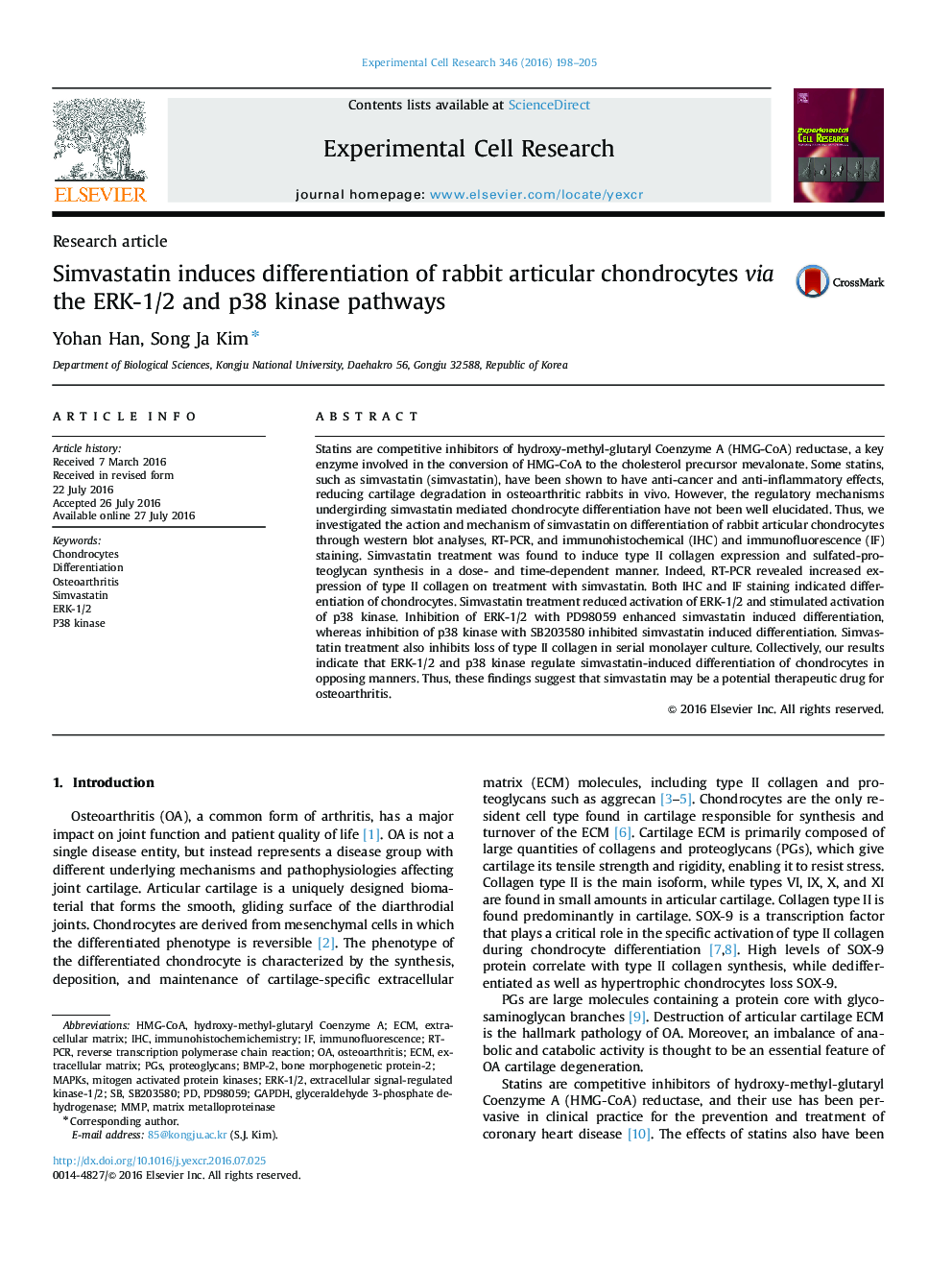| Article ID | Journal | Published Year | Pages | File Type |
|---|---|---|---|---|
| 2129922 | Experimental Cell Research | 2016 | 8 Pages |
•Simvastatin induces differentiation of rabbit articular chondrocytes.•Simvastatin induced differentiation is regulated by ERK-1/2 and p38 kinase pathways.•Simvastatin inhibits de-differentiation in serial monolayer culture.
Statins are competitive inhibitors of hydroxy-methyl-glutaryl Coenzyme A (HMG-CoA) reductase, a key enzyme involved in the conversion of HMG-CoA to the cholesterol precursor mevalonate. Some statins, such as simvastatin (simvastatin), have been shown to have anti-cancer and anti-inflammatory effects, reducing cartilage degradation in osteoarthritic rabbits in vivo. However, the regulatory mechanisms undergirding simvastatin mediated chondrocyte differentiation have not been well elucidated. Thus, we investigated the action and mechanism of simvastatin on differentiation of rabbit articular chondrocytes through western blot analyses, RT-PCR, and immunohistochemical (IHC) and immunofluorescence (IF) staining. Simvastatin treatment was found to induce type II collagen expression and sulfated-proteoglycan synthesis in a dose- and time-dependent manner. Indeed, RT-PCR revealed increased expression of type II collagen on treatment with simvastatin. Both IHC and IF staining indicated differentiation of chondrocytes. Simvastatin treatment reduced activation of ERK-1/2 and stimulated activation of p38 kinase. Inhibition of ERK-1/2 with PD98059 enhanced simvastatin induced differentiation, whereas inhibition of p38 kinase with SB203580 inhibited simvastatin induced differentiation. Simvastatin treatment also inhibits loss of type II collagen in serial monolayer culture. Collectively, our results indicate that ERK-1/2 and p38 kinase regulate simvastatin-induced differentiation of chondrocytes in opposing manners. Thus, these findings suggest that simvastatin may be a potential therapeutic drug for osteoarthritis.
